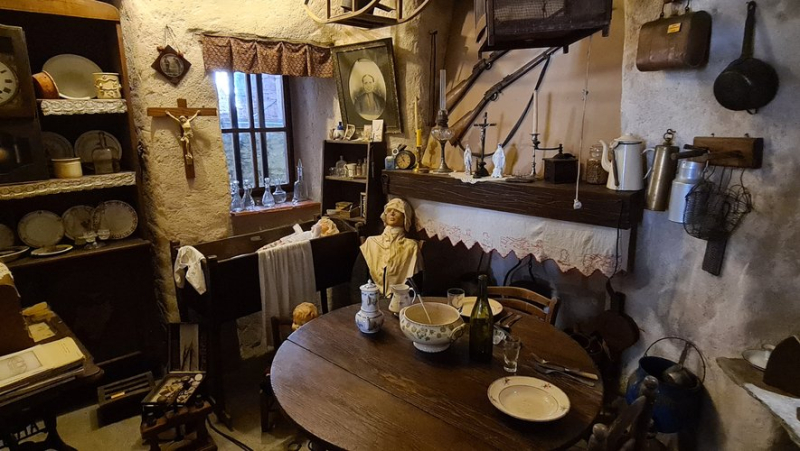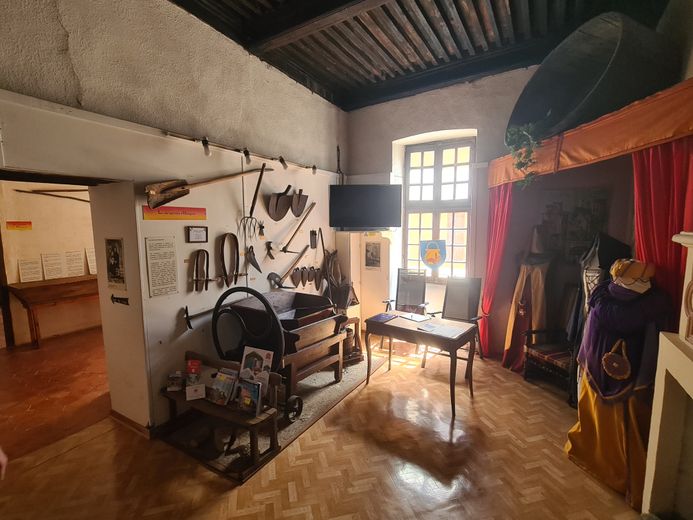The Olargues Museum, a piece of history from one of the most beautiful villages in France

The Museum of Arts and Traditions in Olargues invites visitors into the daily lives of the people of Olargues from the medieval era to that of their grandparents. Luca Bensiali
Along with Minerve and Saint-Guilhem le Désert, Olargues is the third town in Hérault to be included in the “Most Beautiful Villages in France”. The museum, open in the afternoons from Tuesday to Sunday, tells the story of this medieval town.
At the foot of the old bell tower that peaks over the valley, the Olargues Museum of Arts and Traditions opens its doors to walkers from the high cantons. The building, built by the Hospitallers of Saint John of Jerusalem in the 14th century, contains the entire history of the village, now classified among “The Most Beautiful Villages in France”.
From the daily life of the people of Olargues to the natural wealth of the village
Hidden between two small parallel streets, 300 m2 on three floors are available to the most curious visitors. “The museum is about forty years old. We have eight rooms and as many themes, which tell the story of the lords of Olargues up to that of the grandparents and parents of Olargues”, explains with passion Jean-Claude Branville, one of the volunteers who provides tours of the museum. “It is a very large research work, even by historian, that was done to create the museum. So the rooms evolve according to what we still find today”, continues the septuagenarian, an expert in the selection of the most beautiful villages in France.
Objects from different eras, such as reconstructions, through models, the collection presented aims to be the most immersive possible to tell the story of the daily life of the Olarguais. Miners, winegrowers, craftsmen and washerwomen all have their place in the galleries described by the guide. And fortunately, since it will often be difficult to answer the recurring question: “What do you think this object is for”?”.

Reconstructions and original tools litter the walls of the museum. Luca Bensiali
After having immersed oneself in the traditional houses, it will only take a whim for our curiosity to turn to another theme: the natural wealth of the village. The museum obviously returns to the geological heritage of the Hérault lands."We have all the minerals here. Many internationally renowned geologists come to us to study our finds. At the time, we always had one or two geologists in the village. It allowed us to create this beautiful little treasure for the museum.", rejoices Jean-Claude, his eyes shining in front of the stones.
The second largest medieval city in Languedoc
Olargues is also and above all a medieval city, the second largest in Languedoc after Carcassonne in the 14th century. The castle, which was backed by a church of which only the bell tower remains, is no more. But the medieval imprint remains in the streets as well as in the museum, which enjoys reconstructing the weapons and outfits of the knights of yesteryear.

The medieval imprint of the village is respected in the museum. Luca Bensiali
Finally, the museum gives free rein to the imagination of artisans and artists since a final room offers temporary exhibitions throughout the year. This summer, for the 80th anniversary of the landing, the four walls of the room pay tribute to the famous resistance fighter Jean-Moulin. An event will take place on August 24.
And also in Olargues
Next to the museum, there is a whole village to discover. Walking the streets of the medieval city is the starting point for many hikes in the Avant-Monts to discover the landscapes of Haut-Languedoc. Above all, the Devil's Bridge spans the Jaur at the bottom of the village. With a central arch measuring 32.6 m in diameter, it is the second largest “donkey-back” bridge of the 12th century in Europe.“It was inaugurated in 1160, three years before the laying of the first stone of Notre-Dame de Paris, and it is still open to traffic!”, Jean-Claude Branville likes to say.
Open Tuesday to Sunday from 3 pm to 6:30 pm. Volunteers take turns to conduct the tours. Free entry. Free participation. Commandery Staircase – 1st Floor, Olargues. I subscribe to read the rest




